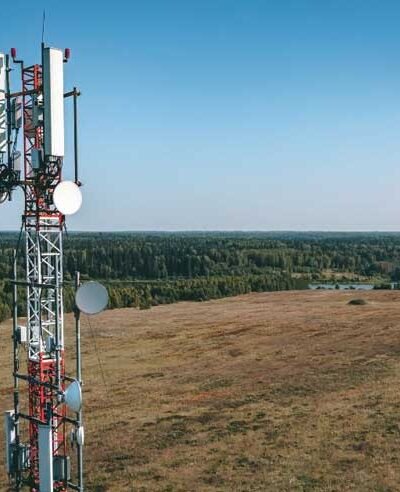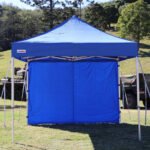Radio communication plays an indispensable role in modern society, enabling everything from emergency services to aviation, maritime operations, amateur radio, and broadcasting. Despite its ubiquity and utility, radio communication is inherently vulnerable to environmental conditions. One of the most influential external factors is weather. The weather impact on radio communication can range from minor disturbances to total disruption, depending on the atmospheric phenomena involved.
This blog explores the various ways weather affects radio signals and outlines key mitigation techniques used to ensure communication stability.
Understanding Radio Wave Propagation
Before diving into the specifics of weather impacts, it’s essential to understand how radio waves propagate. Radio signals travel in different modes depending on their frequency:
- Ground waves: Travel along the Earth’s surface, mainly in the low-frequency (LF) and medium-frequency (MF) bands.
- Skywaves: Reflect off the ionosphere, particularly in the high-frequency (HF) range.
- Line-of-sight (LOS) waves: Used in very high frequency (VHF), ultra-high frequency (UHF), and microwave bands; they travel in straight lines and are affected by obstacles and atmospheric conditions.
Each of these propagation modes reacts differently to weather conditions, which is why some frequencies are more resilient than others.
Weather Conditions That Affect Radio Communication
-
Rain and Precipitation
Rain is a significant disruptor for microwave and satellite communications, especially those operating in the 3 GHz to 30 GHz range (C, Ku, Ka bands). This is because:
- Raindrops scatter and absorb radio waves, particularly at higher frequencies.
- Signal attenuation, known as rain fade, can result in signal loss or degraded quality.
- Heavy rain can also cause multi-path propagation, where signals bounce off surfaces unpredictably.
Mitigation:
- Using larger dish antennaswith higher gain.
- Employing adaptive modulation and codingthat adjusts based on signal quality.
- Implementing site diversitywhere multiple ground stations are used to maintain connectivity.
-
Snow and Ice
Snow is less impactful than rain in terms of absorption but can accumulate on antennas, especially satellite dishes, causing:
- Physical blockage or detuningof antennas.
- Signal scatteringand loss of signal strength in microwave frequencies.
Mitigation:
- Installing dish heaters or coversto prevent snow and ice buildup.
- Using deicing systemsin critical installations.
- Regular maintenance and inspection schedulesduring winter months.
-
Fog and Humidity
While fog may seem innocuous, it consists of tiny water droplets that can affect high-frequency microwave links, though not as severely as rain. High humidity can also:
- Cause changes in refractive index, leading to signal bending.
- Exacerbate ducting(explained below), particularly in coastal or tropical regions.
Mitigation:
- Designing communication systems with Fresnel zone clearanceto avoid unnecessary signal loss.
- Utilizing humidity-resistant materialsfor antenna enclosures and connections.
-
Thunderstorms and Lightning
Thunderstorms introduce two major problems:
- Electromagnetic interference (EMI): Lightning discharges generate broad-spectrum radio noise that can disrupt AM and HF bands.
- Power surges: Can damage sensitive communication equipment.
Mitigation:
- Employing lightning arresters and grounding systems.
- Using EMI shieldingin hardware.
- Scheduling transmission retriesor switching to alternative communication paths when severe interference is detected.
-
Temperature Inversions and Tropospheric Ducting
Unusual temperature profiles can cause tropospheric ducting, where radio waves are trapped between atmospheric layers and travel further than expected. This phenomenon typically affects VHF and UHF frequencies.
- Can lead to interference from distant stations, disrupting local communications.
- Causes unexpected coverage areasand signal fading.
Mitigation:
- Designing systems to account for fade margins.
- Using frequency planning and allocation strategiesto minimize interference.
- Implementing automatic frequency control (AFC).
-
Solar Activity and Ionospheric Disturbances
For HF bands that rely on skywave propagation, solar activity is a key factor. Events such as solar flares, geomagnetic storms, and sunspot cycles can dramatically influence signal quality.
- Increased solar activity can enhance or disrupt ionospheric reflection.
- Severe storms may cause total blackoutof HF communication (known as a “radio blackout”).
Mitigation:
- Monitoring space weather forecaststo anticipate outages.
- Switching to satellite or ground-based alternativeswhen HF is unreliable.
- Using frequency agilityto find workable bands during disturbances.
-
Wind and Storms
While not directly affecting signal propagation, strong winds can physically misalign antennas, especially dishes or directional microwave links.
- Misalignment results in reduced gain and loss of signal.
- Wind can also cause swaying of antenna masts, inducing variable path lengths and multipath effects.
Mitigation:
- Installing guyed or reinforced towers.
- Using motorized tracking systemsto correct for movement.
- Implementing real-time alignment monitoring systems.
Mitigation Strategies: An Integrated Approach
Redundancy and Failover Systems
One of the most effective strategies is building redundancy into communication networks. This includes:
- Multiple transmission paths(fiber, satellite, radio).
- Automatic switchover mechanismsin case of signal degradation.
- Load balancingto distribute traffic during partial outages.
Weather-Resilient Network Design
Designing for resilience involves:
- Factoring in local climate dataduring site planning.
- Using weather-hardened enclosures and cabling.
- Building with elevated or sheltered equipment installationsin flood-prone or snowy areas.
Predictive Analytics and Monitoring
Advances in AI and machine learning now allow for:
- Real-time signal quality trackingand weather data integration.
- Predictive outage modelingbased on forecasted weather conditions.
- Proactive maintenance alertsbased on environmental sensors.
Planning for Weather is Planning for Reliability
The impact of weather on radio communication is both a challenge and an opportunity. While atmospheric conditions remain a variable element in wireless transmission, modern mitigation techniques and thoughtful network design can dramatically reduce disruptions.
Whether you’re managing a public safety network, a satellite internet backbone, or even a rural radio link, understanding how weather affects radio propagation and incorporating protective strategies is crucial to maintaining operational continuity.
By preparing for the worst that nature can deliver, we ensure that our critical communications are always ready, rain or shine.





Leave a Reply